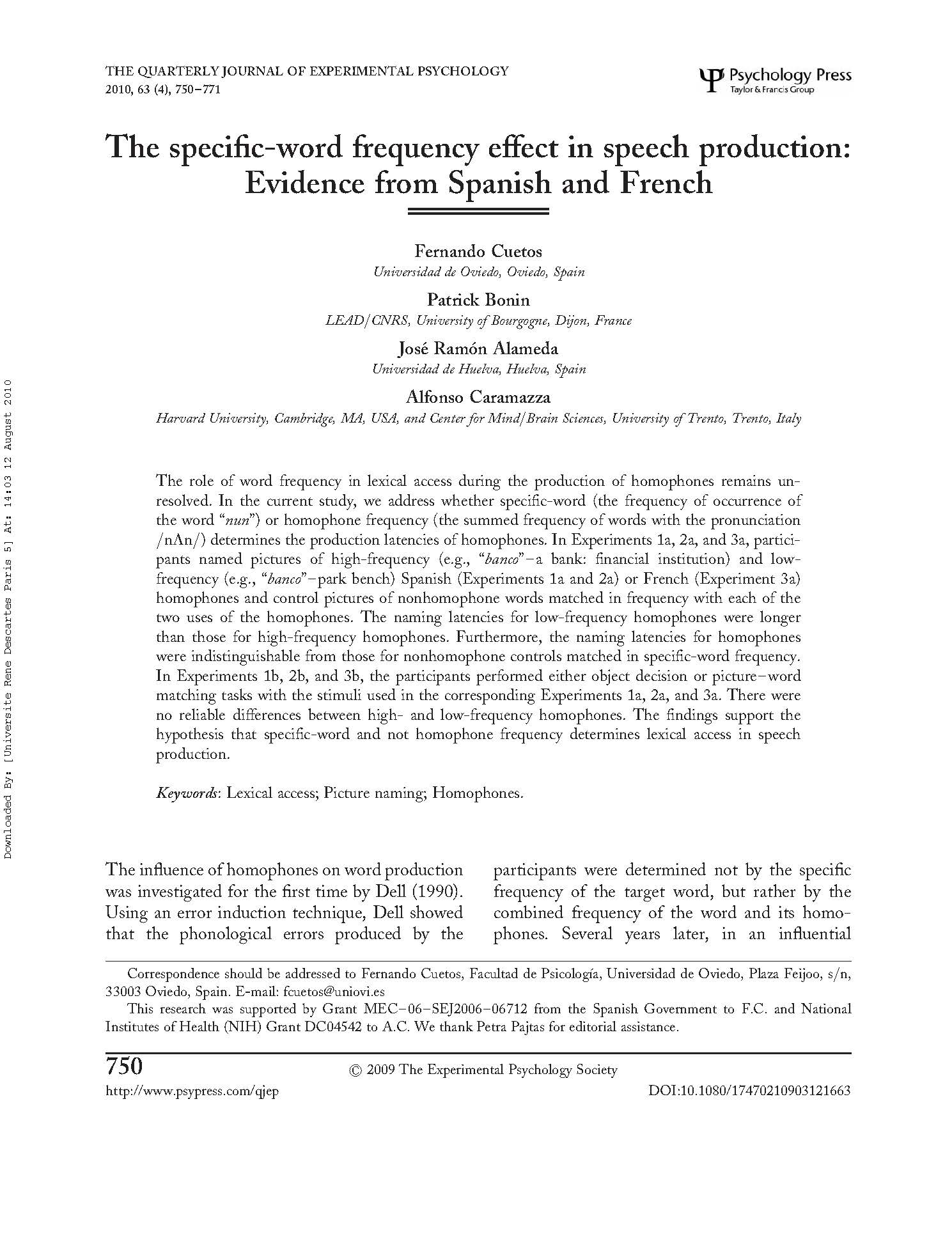The role of word frequency in lexical access during the production of homophones remains unresolved. In the current study, we address whether specific-word (the frequency of occurrence of the word onuno) or homophone frequency (the summed frequency of words with the pronunciation /nn/) determines the production latencies of homophones. In Experiments 1a, 2a, and 3a, participants named pictures of high-frequency (e.g., obancoo-a bank: financial institution) and low-frequency (e.g., obancoo-park bench) Spanish (Experiments 1a and 2a) or French (Experiment 3a) homophones and control pictures of nonhomophone words matched in frequency with each of the two uses of the homophones. The naming latencies for low-frequency homophones were longer than those for high-frequency homophones. Furthermore, the naming latencies for homophones were indistinguishable from those for nonhomophone controls matched in specific-word frequency. In Experiments 1b, 2b, and 3b, the participants performed either object decision or picture-word matching tasks with the stimuli used in the corresponding Experiments 1a, 2a, and 3a. There were no reliable differences between high- and low-frequency homophones. The findings support the hypothesis that specific-word and not homophone frequency determines lexical access in speech production.
The specific-word frequency effect in speech production: Evidence from Spanish and French
